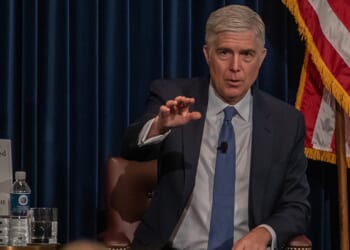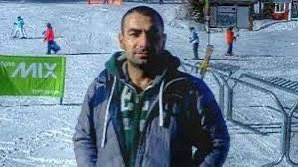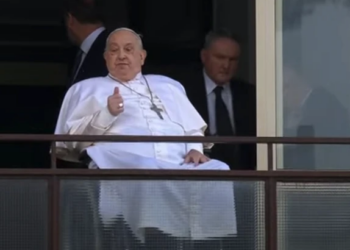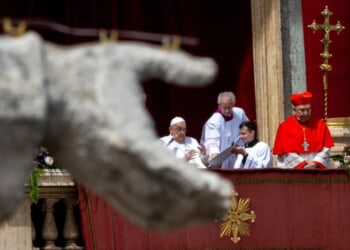The AH-1 Cobra’s performance in Grenada underscored its value as a flexible and lethal platform in low-intensity conflicts.
Developed by Bell Helicopter in the 1960s, the AH-1 Cobra was the United States Army’s first dedicated attack helicopter. The helo was developed in direct response to the hard lessons learned during the Vietnam War.
Designed to provide close-air support (CAS), armed escort, and to attack enemy armor, the Cobra was used extensively in America’s intervention in Grenada in 1983. In that fight, the Cobra proved itself to be a versatile platform that could deliver immense firepower on a variety of targets.
By 1983, the Cobra had evolved into variants, such as the AH-1S, equipped with a 20mm M197 cannon, TOW anti-tank missiles, and 2.75-inch rocket pods, making it ideal for engaging ground targets. The helicopter could achieve speeds of up to 170 miles per hour.
Why the United States Invaded Grenada
Following a coup that ousted Grenadian Prime Minister Maurice Bishop, Operation Urgent Fury began on October 25, 1983. The operation was meant to secure the island, neutralize hostile communist forces, and restore a pro-Western government.
That Grenada was in the Western Hemisphere, and it was being destabilized by the communist Cuban military on behalf of the Soviet Union, meant that the U.S. military operation had a deeper meaning for Washington and the American people. The United States deployed a joint task force that included U.S. Army Rangers, Marines, Navy SEALs, and the 82nd Airborne Division, supported by multiple air and naval assets.
The AH-1 Cobra’s role in Grenada was shaped by the operation’s rapid tempo and the island’s challenging terrain, which included dense jungles, hilly landscapes, and urban areas, like St. George’s. In other words, this was precisely the kind of battlefield that the Cobra was designed to operate in. Cobras were deployed from forward operating bases, often operating in pairs to maximize coverage and firepower.
The U.S. Military Wanted the Cobra for Grenada
Cobras provided direct fire support to ground forces, particularly during the initial Ranger assaults on places like the Point Salines airfield and the Marine landings at Pearls Airport. The 20mm cannon and rockets were highly effective against the Grenadian People’s Revolutionary Army (PRA) positions, light vehicles, and fortified buildings. The helicopters’ ability to loiter and deliver precise fire allowed ground units to advance with reduced risk from small arms and machine-gun fire.
Grenada’s defenders—including those aforementioned Cuban military elements—employed light anti-aircraft (AAA) systems, like the ZU-23-2 23mm guns and man-portable air-defense systems (MANPADS). Cobras were instrumental in identifying and neutralizing these threats, using their speed and low-altitude tactics to evade fire while delivering salvos of rockets or TOW missiles. Their agility was critical in avoiding ground fire, though some helicopters sustained damage from small arms.
The AH-1’s two-man crew and its then-advanced optics allowed the helicopter to conduct reconnaissance missions, identifying enemy positions and movements. This was particularly important in areas like Grand Anse, where U.S. forces faced sporadic resistance from PRA militia and their Cuban advisors. Cobras relayed real-time intelligence to ground commanders, enhancing situational awareness on a fluid battlefield.
A key objective of America’s Operation Urgent Fury was the rescue of American medical students at St. George’s. Cobras escorted transport helicopters, such as UH-60 Black Hawks, during evacuation missions, providing overwatch and suppressing potential threats. Their presence often deterred enemy forces from engaging evacuation sites, ensuring the safe extraction of civilians.
The Cobra Helicopter Wasn’t Perfect—but It Got the Job Done
Of course, the Cobras were not without their challenges.
Operation Urgent Fury was—as the name suggests—urgent, and the planning was somewhat slapdash. There were coordination issues between air and ground units, occasionally complicating target identification. The dense urban and jungle environments limited visibility and restricted maneuverability at times, forcing pilots to operate at extremely low altitudes and increasing the Cobra’s vulnerability to ground fire.
Additionally, the Cobras faced real logistical constraints, as the operation’s short duration and remote setting strained fuel and ammunition resupply. Despite these hurdles, however, the AH-1’s adaptability and crew proficiency ensured mission success.
The AH-1 Cobra’s performance in Grenada underscored its value as a flexible and lethal platform in low-intensity conflicts. Its ability to deliver precise, rapid firepower in support of ground forces was crucial to the overall operation’s success—which concluded within days—with American forces successfully securing the island and rescuing the U.S. civilians trapped there.
Most of all, Grenada showed that the Cobra thrived in unconventional conflict. This was an asymmetrical war in which irregular forces and small-scale engagements defined the course of the conflict. The Cobra’s diverse armament and maneuverability allowed it to adapt to these conditions, proving that attack helicopters could excel in counterinsurgency and urban operations.
Learning lessons from the failed Iran hostage rescue during the Jimmy Carter administration, the Pentagon had steadily worked toward becoming a joint force, where all four branches at the time operated in a seamless fashion. The campaign in Grenada was one of the earliest examples of a joint operation. Yet, it was still new. So, Urgent Fury exposed deficiencies in the Pentagon’s joint force coordination, including communication gaps between Army aviation, Marine units, and naval air support.
The Cobra’s effectiveness was occasionally hampered by those problems listed above. This prompted post-operation reforms in joint doctrine and training, which influenced later conflicts, like in modern warfare.
Operation Urgent Fury was one of the last major combat deployments before the AH-1 Cobra was replaced by the AH-64 Apache in U.S. Army service. While the Apache offered advanced electronics and survivability, the Cobra’s performance in Grenada cemented its legacy as a reliable and effective attack helicopter.
The AH-1 Cobra is no longer in service. But Grenada may have been its finest hour. Hard lessons learned in this fight with the Cobras undoubtedly influenced the final design of the AH-64 Apache which still rules the skies today.
About the Author: Brandon J. Weichert
Brandon J. Weichert, a Senior National Security Editor at The National Interest as well as a contributor at Popular Mechanics, who consults regularly with various government institutions and private organizations on geopolitical issues. Weichert’s writings have appeared in multiple publications, including the Washington Times, National Review, The American Spectator, MSN, the Asia Times, and countless others. His books include Winning Space: How America Remains a Superpower, Biohacked: China’s Race to Control Life, and The Shadow War: Iran’s Quest for Supremacy. His newest book, A Disaster of Our Own Making: How the West Lost Ukraine is available for purchase wherever books are sold. He can be followed via Twitter @WeTheBrandon.
Image: Shutterstock / ranchorunner.















